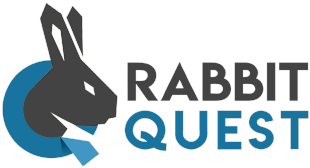How to prevent an initiative overload?
Practical strategies for managing and streamlining your organization's initiatives without overwhelming your team Discover how to prevent initiative overload and effectively manage your organization's health and vitality programs with our easy-to-implement tips. Keep your team focused, motivated, and stress-free.
Time to read: 5 minutes
Imagine this: you're handling multiple projects at once, like an office worker managing multiple tabs on a computer. Each tab represents a different initiative you're implementing in your organization. It's exciting and challenging, yet soon, too many tabs open concurrently can lead to a system slowdown or even a crash. This is what we refer to as initiative overload, and it's a scenario we want to help you sidestep.
Too many initiatives can lead to decreased productivity, overwhelmed employees, and unfulfilled goals. More importantly, by managing initiatives effectively, you will enhance the overall wellbeing and performance of your workforce; essential for the smooth functioning of your organization.
Avoiding initiative overload ensures that each program receives the attention it needs, preventing your employees from feeling overwhelmed by a multitude of well-intentioned programs. Here's how you can efficiently manage your 'workstation':
Prioritize
The trick isn't to open more tabs; it's to wisely select which ones to open and work on. Prioritize your initiatives based on their alignment with the organization's vision, the impact on employee wellness, and the urgency of the needs they address. A few well-chosen tabs can be more effective than a screen full of unused ones. From our experience, here are a few things you can keep in mind:
-
Seasons: Winter for mental wellness, spring for connection, summer for movement, fall for overall vitality or sleep. This follows the natural cycles of your employees and will guarantee impact on their health and mental wellness.
-
National days, months, years: In the Netherlands, September is the month to kick-off your new vitality plan. Go with the flow and use the ongoing motion. Our partners also promoted their bike lease plans on the national cycle to work day for example.
-
Input from employees: Ask your employees for their interests. Just like users who input data, the people most affected by your initiatives, your employees, should have a say in them. Regular feedback can help assess if the current initiatives are manageable or if it's time to close some tabs. This fosters a sense of ownership and commitment among your team. What are they interested in or need support with?
Space out initiatives
Just like you don’t open all your tabs at once, don’t launch all initiatives together. Staggering your programs allows each one to gain the attention it requires and prevents your team from feeling overwhelmed. One specific theme per 3 months where you have one initiative that you can actively promote will be everything you need. Quality over quantity.
Clear communication
Initiative overload often stems from confusion. Be transparent about what each initiative involves, why it's being implemented, and how it will benefit employees. This clarity prevents misunderstandings and encourages engagement.
-
Regularly evaluate: Just as you regularly check the relevance of each open tab, regularly assess the effectiveness and relevance of each initiative. If an initiative isn't delivering the expected results, it might be time to close that tab.
-
Employee wellness program: Suppose you've launched a wellness program six months ago aimed at improving employee health through weekly exercise classes and nutrition talks. However, upon reviewing participation rates and feedback, you discover that employees don't find the talks helpful. This might be a signal to "close the tab" on this initiative, or at least reassess its format and content.
-
Virtual training program: Say your organization has rolled out a new virtual training program aimed at upskilling employees. After several weeks, you have enough data to have clear insight in the interests of the employees. It could be time to make changes to the initiative.
Celebrate successes
Each time you successfully manage an initiative; celebrate! Recognizing and rewarding your team's efforts boosts morale and reinforces the value of the initiatives, making the process more enjoyable and less overwhelming.
-
Share success stories: Whether it's in a company-wide email, during a team meeting, or through your organization's internal communication platform, make it a habit to share success stories. Highlight the initiative, its goals, the results, and how the team's work contributed to this success. It can also be helpful to highlight individual contributions, as this personalizes the achievement and makes employees feel seen and appreciated.
-
Reward efforts: Recognition doesn't always have to be grand. Small rewards can also go a long way in boosting morale. This could be anything from a handwritten thank-you note to a small gift card or an extra day off.
-
Team celebrations: Celebrate as a team! This could be a team lunch, a virtual happy hour, or a fun team-building activity. Not only does this provide a break from the usual routine, but it also gives team members a chance to bond and celebrate their collective success. Public Recognition: Consider recognizing team successes in larger company meetings or in company newsletters. This not only gives deserved recognition to the team but also allows other departments to learn from successful initiatives.
Preventing initiative overload isn't just about managing fewer initiatives;it's about managing them wisely. By prioritizing, spacing out, and regularly evaluating your initiatives, you can maintain a healthy, vibrant, and efficient working environment. So it's time to showcase your multitasking skills without overwhelming yourself or your team.




